Sound: 









Value: 









(Read about our ratings)
Measurements can be found by clicking this link.
Why are the Evos the first Etymotic earphones I’ve ever reviewed on SoundStage! Solo? After all, the company practically invented the in-ear monitor, and it was the first to use balanced armature drivers in consumer earphones. But I still remember the first time I tried Etymotics, way back in the early 1990s, and while the highs sounded clean, I was put off by the lack of bass response, which, as a musician, I knew was not realistic. I respected the brand, but only because it was respected by people I respected.
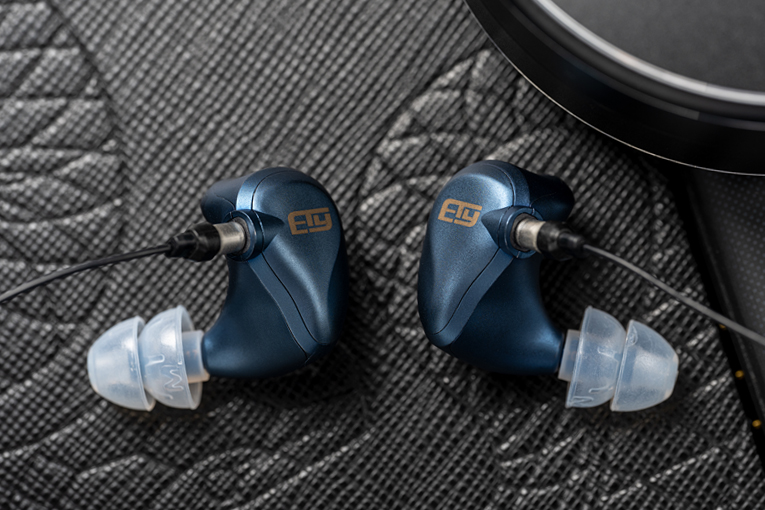
A few years ago, the company introduced models with a bit more bass, but it still wasn’t enough oomph for me, and the tubular design of the earphones never fit me well in the first place. But maybe that’ll change with the Evos, the most “normal” set of earphones the company has yet offered.
The Evos ($399.99, on sale for $299.99 through the 2021 holidays, all prices USD) have a design that’s relatively conventional for high-end earphones, with an ear-filling, cable-over-ear design and three balanced armatures—the first time Etymotic has used multiple drivers in an earphone. It’s a two-way design, with two balanced armatures for the bass and a single balanced armature for the mids and treble. The drivers are mounted in an injection-molded metal enclosure.
The cable is unlike any other I’ve seen—and one of the few I’ve seen that an earphone maker took the trouble to call out in its marketing materials. It’s a Linum BaX cable from Estron. According to my micrometer, the cable measures just 0.85mm in diameter, but it’s engineered to be exceptionally durable for its size—rated pull strength is 13 pounds. The thin, highly flexible design is said to reduce microphonics. It’s tipped with Estron’s T2 detachable connector, which is smaller than the common MMCX connector and said to be more durable.
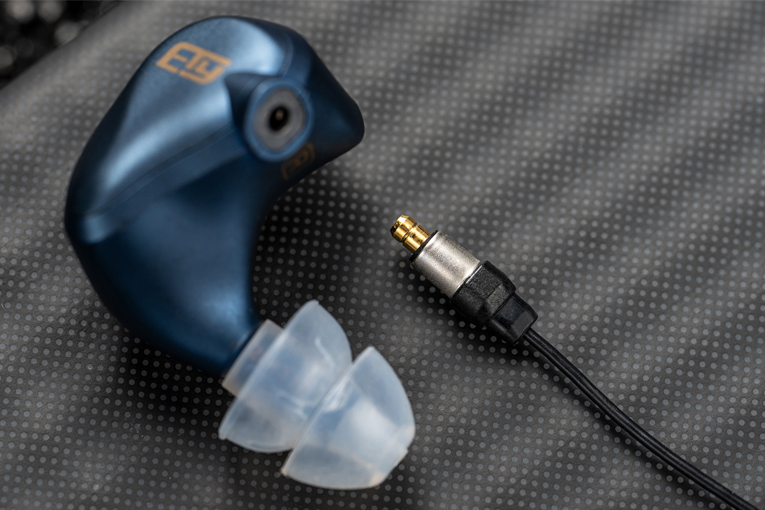
Rated impedance for the Evos is 47 ohms. Since we’re dealing with balanced armatures, I expected to see a big rise in impedance in the treble, but that wasn’t the case; check the measurements section (link at the top of this page) for all the details. Rated sensitivity is 99dB/0.1V, but 0.1V is just 0.21mW at 47 ohms. This translates to a sensitivity of 105.7dB at 1mW, which is fairly high.
Considering the apparently complete rethink that the Evo earphones represent, I was eager to hear them—and to find out whether I could fall in love with a line that never turned my head (or ears) before.
In the box
The package includes the earphones and seven sets of eartips: double-flange silicone tips in four sizes, triple-flange tips in two sizes, and a single size of big, fat foam tips. The sound tubes on which the eartips fit have tiny, response-shaping filters, which can get clogged, so the package includes a set of replacement filters and a tube for removing the old filters.
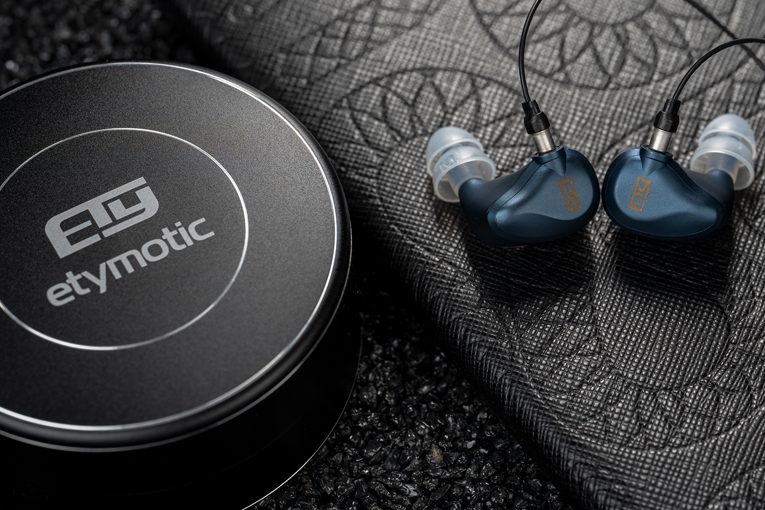
A fabric carrying sack is included, along with a roughly hockey-puck-sized metal case. The metal case includes a foam insert around which you can wind the cables. There’s also a small cable tie included.
Use
The sound tubes on the Evos that go into your ear canals are unusually long. For me, at least, this made getting a secure fit difficult because the earphones are heavy: 13g a side, versus 6g for the Meze Rai Penta earphones, which are of similar metal construction and have five balanced armatures per earphone to the Evos’ three. Even though the foam tips and the largest of the silicone tips both gave me a good seal, the body of the earphones couldn’t get far enough into my pinna to nest securely—they were kind of hanging out of my ear, which made the seal more precarious and made the Evos annoying to use whenever I was in motion, even on short, sedate walks with my “vintage” Shih Tzu.
According to Estron, the Linum cable is “Tangle-less: Almost!” I consider this a misrepresentation because the Linum cable is the tangliest I’ve encountered since manufacturers started trying to make their cables less tangly, about ten years ago. If you leave the earphones sitting around instead of winding them carefully back into their case, you will end up having to untangle them, something I haven’t had to do for a long time. Considering that I rarely find microphonics to be a problem now (because that’s another issue the industry has largely solved), for me, at least, this cable presented only frustrations, with no advantages I could perceive.
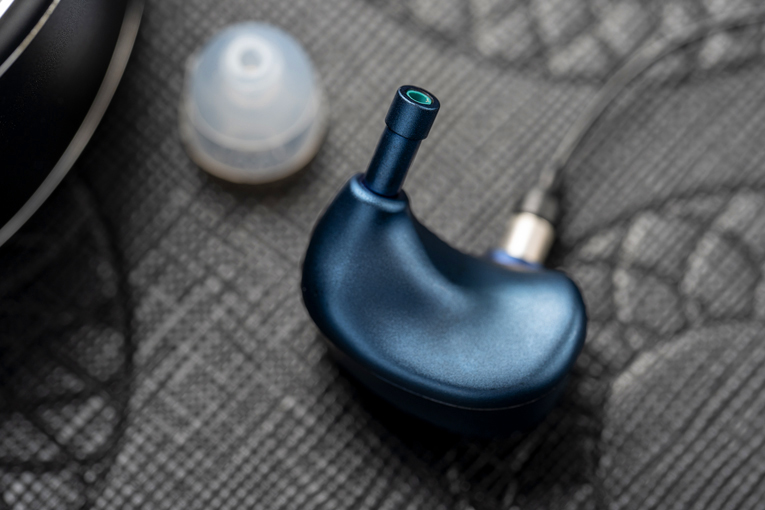
But there’s one upside in this section: the Evos are easy to drive. Even my Samsung Galaxy S10’s whopping 2.6mW into 32 ohms was adequate to get the Evos playing very loud with very conservatively mastered recordings, such as Camille Thurman’s version of “September in the Rain” (Waiting for the Sunrise, 16-bit/44.1kHz AIFF, Chesky).
Sound
As I listened more to “September in the Rain,” I got a clearer picture of where Etymotic’s going with the Evos. The opening of the tune, where Thurman sings to accompaniment from double bass, showed right away that the reproduction of mids and highs—in this case, Thurman’s voice—was largely neutral and super-clear, and I got a good sense of the “room tone” of the recording space just from hearing her voice echo off the walls.
The double bass also sounded exceptionally clear—I got a great sense of the strings clacking on the fingerboard and the soft, subtle scrape of the bassist’s fingers against the strings as he plucked them. I think this kind of articulation and clarity is something most double bassists want to achieve in their recorded sound, but it’s hard to get with pickups or close-miking. (Waiting for the Sunrise was recorded binaurally, with microphones in the “ears” of a dummy head, and the instruments’ levels adjusted by placing them at different distances from the mikes.) But the bass didn’t have a lot of body; I couldn’t hear the big box breathing and booming as I would with most classic jazz recordings. As a result, the sound got a little fatiguing after a while, the way it would if you turned the treble up about two clicks on your stereo.
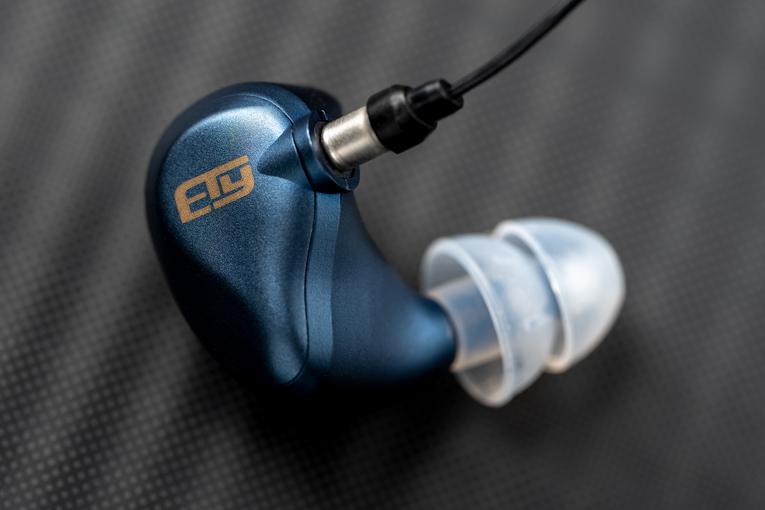
I got a somewhat similar impression when I played “Leave the Door Open” from An Evening with Silk Sonic, a recording by Bruno Mars and Anderson .Paak (24/44.1 FLAC, Aftermath Entertainment / Qobuz). Overwhelmingly, the one word that came to mind when I listened to this tune through the Evos was “detail.” It was easy to hear all the individual tracks in this lush production—the numerous backing vocals, the glockenspiel that doubles the backing vocals during the chorus (nice touch!), the 1970s-soul-style Stratocaster (I guessed) rhythm tracks deep in the background, etc. Again, the bass was attenuated, and thus some of the tune’s sense of drive was lost, but in this case, I didn’t find the sound as fatiguing as I did with the Camille Thurman recording.
Wanting to dig deeper into the highs and the lows, I put on Camille Saint-Saëns’s Third Symphony, which sets the low tones of pipe organ amidst a full orchestra (Saint-Saëns Complete Symphonies, by the Orchestre National de France, with Christian Măcelaru conducting, 24/96 FLAC, Warner Classics / Qobuz). In the first half of the first movement, “Adagio—Allegro moderato,” the strings and the woodwinds sounded very clear and clean, with no apparent bumps or dips in the mids and the treble. During loud passages, though, the sound was a little bright because the basses were somewhat attenuated, and I didn’t get much sense of the resonance of the strings.
Of course, audiophiles gravitate to the second half of the first movement, “Poco adagio,” because it opens with a beautiful string-section melody backed by lovely, deep pipe organ tones. This recording isn’t a “pants flapper” like the must-hear version included on the Boston Audio Society Test CD-1, but still, I know from listening to the Orchestre National de France recording on several other headphones that the organ sounds a lot deeper than what I heard through the Evos.
Inspired by Bob Spitz’s engaging new book, Led Zeppelin: The Biography, I put on “Babe I’m Gonna Leave You” from Led Zeppelin (24/96 FLAC, Atlantic/Qobuz), the first of Zep’s classic tunes contrasting heavy (lead, or “led”) and light (zeppelin) passages. The Evos sounded great on the light parts, such as the first 57 seconds, which are almost entirely acoustic guitar and vocals, with a touch of electric bass coming in for the last eight bars. The earphones made it easy to hear Jimmy Page’s now-classic (and still awesome-sounding) technique of panning an acoustic guitar hard into one channel and piping its reverb into the other channel, and Robert Plant’s voice sounded clear and natural, with maybe just a slightly detectable trace of extra treble.
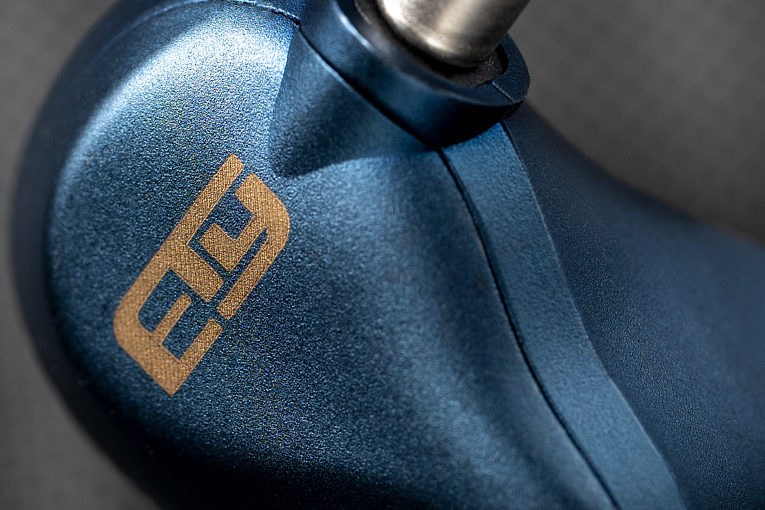
On the heavy parts, though, the attenuated bass took away much of the intended impact; the bass and kick drum were barely audible, and the powerful dynamics of John Bonham’s legendary tom sound were greatly toned down. I loved it when the band went back to the lighter sections because Page’s acoustic licks sounded wonderfully clear, his reverb tricks were unusually audible, and the backing vocals sounded positively haunting. But I doubt most Led Zeppelin fans want to hear just “zeppelin” with no “led.”
Comparison
I don’t have a whole lot of mid-three-figures passive earphones sitting around—my work goes with the flow of what the market’s focusing on, and right now that seems to be over-$1000 passive earphones and under-$300 true wireless earphones—but I did have the Sennheiser IE 300 ($299) and JVC HA-FW01 ($329.95) earphones, which both use a single dynamic driver per ear. To throw in some balanced-armature action, I added the aforementioned Meze Rai Penta ($1099) and the Campfire Audio Satsuma ($199) earphones.
On my favorite tonal-balance test, Tracy Chapman’s “Fast Car” (Tracy Chapman, 16/44.1 FLAC, Epic/Qobuz), the double-tracked acoustic guitars sounded really clear through the Evos, as did the cross-sticking on the snare drum—but the drum had very little body. I could easily and clearly hear the upper harmonics of the electric bass, but the fundamental tones of the bass were barely audible.
The IE 300s, HA-FW01s, and Rai Pentas all sounded much fuller and more balanced than the Evos. The closest any of the earphones I tried came to the Evos’ tonal balance was the Campfire Satsumas—but even the Satsumas, which I characterized as bass-shy in my review, sounded fuller than the Evos. Maybe this is my bias talking, but all of the balanced-armature models—the Evos, the Rai Pentas, and the Satsumas—had clearer and more present treble than the dynamic-driver models. I know some audio enthusiasts value clear treble above any other attribute in an audio product, but it’s just one of many things I look for in audio products; in my view, bass response shouldn’t be sacrificed on the altar of treble detail.
Conclusion
I was wrong when I assumed the Evos would be Etymotic’s move toward a more mainstream approach just because they look so much more like the earphones I’m used to reviewing. Rather, the Evos seem more like an attempt to create a more advanced and refined set of earphones targeted at existing Etymotic customers. As I stated in the beginning, some audio pros I deeply respect are Etymotic fans, and I’m confident they’ll love the Evos. But those of us who crave a fuller sound will probably prefer other options.
. . . Brent Butterworth
Associated Equipment
- DAC-amplifiers: EarMen Eagle, THX Onyx
- Smartphone: Samsung Galaxy S10
Etymotic Evo Earphones
Price: $399.
Warranty: Two years.
Etymotic Research Inc.
61 Martin Ln.
Elk Grove Village, IL 60007
Phone: (888) 389-6684
Email:
Website: www.etymotic.com





